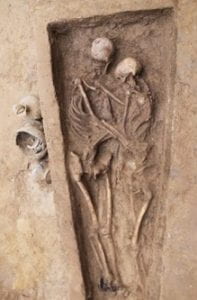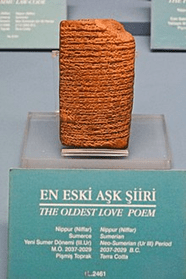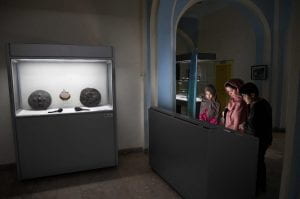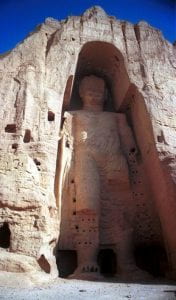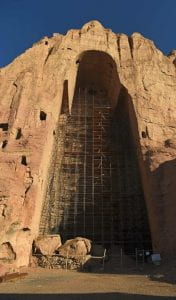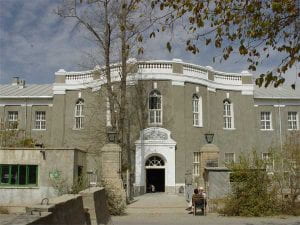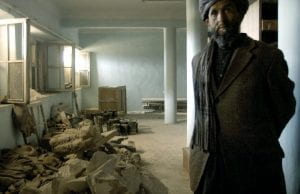
This past Thursday, we held our first Graduate Colloquium of the semester! Ryan Clark, MA, RPA, and IUP Alum, came to speak with us about what it is like working for the U.S. Army Corps of Engineers (USACE) as an Archaeologist in the New York District. Ryan also has 10 years of experience in the private sector, and during his time with USACE he has worked on projects ranging from Coastal Storm Risk Management, Navigation, Flood Risk Management, Ecosystem Restoration Programs, Military Support, and Regulatory Actions.
He broke his presentation into three sections. The first section gave a brief overview of the history of the USACE as well as parts of their civil works programs, which focuses on flood risk management, navigation, and ecosystem restoration. He discussed the USACE’s attention to emergency response and other missions with specific parameters. He noted that archaeologists usually find themselves working in the civil works or regulatory side focused on permit review, as well. He then discussed examples of the ranges of projects you might find yourselves working on while with the federal government, such as hurricane damage assessments, seawall designs, wetland habitat restorations, and fish passage barriers, to name a few. He emphasized that archeologists in this field learn about different areas of expertise as they interact with other experts from other fields. For example, if you find yourself working on a bird habitat project, you might learn about the different seasons they are around, which might change the way you approach sites with the same bird habitats in future projects.
 His second section walked us through Section 106, NEPA, and how federal agencies like the USACE work within them when designing and planning projects. His flowchart simplified the processes. He went over the congressionally mandated 3 year, 3 million dollar, 3 stages of study limits for projects. He also gave an example of such a project, a harbor deepening project. He walked through the steps and phases of the study to emphasize what it is like working with different departments and teams to figure out where the greatest impact will be to cultural, historical, and environmental components of the area to be affected. Ryan noted that a big part of his job is coordination, as well as creating agreements and contracts to prepare for the effects of projects.
His second section walked us through Section 106, NEPA, and how federal agencies like the USACE work within them when designing and planning projects. His flowchart simplified the processes. He went over the congressionally mandated 3 year, 3 million dollar, 3 stages of study limits for projects. He also gave an example of such a project, a harbor deepening project. He walked through the steps and phases of the study to emphasize what it is like working with different departments and teams to figure out where the greatest impact will be to cultural, historical, and environmental components of the area to be affected. Ryan noted that a big part of his job is coordination, as well as creating agreements and contracts to prepare for the effects of projects.
The third section focused on federal jobs and the application process, mainly on how to navigate USAJOBS. He began by stating that first you need to look for jobs using keyword searches with archaeology and anthropology or use the job family code 0193 Archaeology. Recently graduated graduate students will most likely be applying for jobs under the public only or student section, unless you have over a year of more of experience working for the federal government, which you will then be eligible to apply for other jobs with that requirement. Ryan noted that it is good practice to take note of the salary or pay scale for the job you are applying for, to make sure you are qualified for that level. Depending on your experiences, either federal or non-federal, while applying you need to match what you have done to its’ federal equivalency to make sure you are eligible for the pay scale level you are applying for. He also said to take note of relocation expenses to see if you are able to get them even though it is usually hard to do so, and also whether the job is temporary or permanent.

He then stated that reviewing the duties of the job is important. For one it is good to know what the job will require, but it also aids with creating a resume. A big thing he noted was that it is better to build a resume within USAJOBS rather than attaching one. By drawing out keywords from the duties section, you can craft a resume that will be more likely to be selected based on the keywords it contains from the language of the duties listed. It is important to translate things you have done into the scope of the job and if those hiring have questions about the extent or caliber of what you have done, they can ask for further clarification during an interview. It is also encouraged to have several resumes or cover letters that are tailored for different jobs. Ryan continued on his tips and tricks for USAJOBS, stating that if you want a higher-level job you should start lower. For example, if you want a GS-11 but don’t have the qualifications, you should look at the requirements for a GS-09 and apply for that job, and eventually work your way up into the job you want. He also noted that you should try to list yourself as closely as possible to expert on the questions they ask on the site, answering honestly by making sure you are actually qualified, but also making sure you are an expert so that you have a better chance of being selected.
To summarize; build your resume in USAJOBS using keywords from the position you want, have multiple resumes by type of job, don’t sweat the CV, translate prior work into relevant experience for the job you want, and check the requirements for the application.
Overall, Ryan emphasized that his job was not always what we would consider in the scope of archaeology. He does a lot of contract management, such as hiring people, and not as much fieldwork. However, while working on million-dollar projects and contracts he has gotten to work with a lot of cool things, such as a schooner, although he has no background in maritime archaeology. He likes the teamwork environment, and that he actually gets to use his job in the civil works sector to help people, giving a contemporary relevance to archaeological work.
We thank Ryan Clark for presenting for us, giving us insight into what it is like working for the federal government as an archaeologist, and helping us learn more about applying for these types of jobs!
Follow IUP Anthropology on Facebook, Twitter, and Instagram

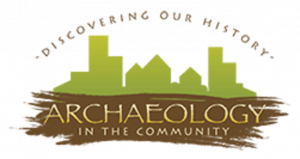
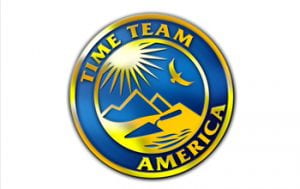 You may have also seen Dr. Jones teaching field schools on PBS’s “Time Team America” a show that aims to give viewers an “over the shoulder” look into what archaeologists do. These field schools took place at a plethora of sites in Maryland, Oklahoma, and Colorado and involved students at the junior high and high school level. Jones taught them how to properly conduct an archaeological project including how to survey, keep records, and conserve the artifacts that they found. Additionally, at the Josiah Henson site, Dr. Jones taught her students about the importance of working with the decendent communities to gain a greater understanding of the people who inhabited the area.
You may have also seen Dr. Jones teaching field schools on PBS’s “Time Team America” a show that aims to give viewers an “over the shoulder” look into what archaeologists do. These field schools took place at a plethora of sites in Maryland, Oklahoma, and Colorado and involved students at the junior high and high school level. Jones taught them how to properly conduct an archaeological project including how to survey, keep records, and conserve the artifacts that they found. Additionally, at the Josiah Henson site, Dr. Jones taught her students about the importance of working with the decendent communities to gain a greater understanding of the people who inhabited the area.



